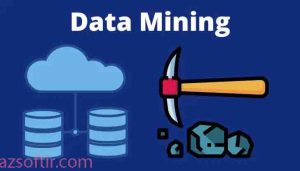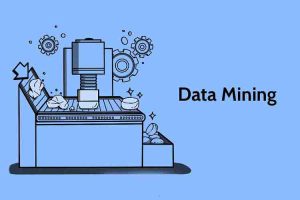do data mining projects and analyzing statistical data in the field of industrial research, information technology, commerce, using the latest methods and techniques
How will the project order be registered on the azsoftir site?
To register your order, you can register via email address azsoftir@gmail.com or contact number +989367292276 or via the link.
Advice on Editing, Research Projects, and Theses for Academic Fields:
We offer specialized support in a range of academic fields including Economic Sciences, Human Sciences, Computer Science, Management Science, Technical and Engineering fields, among others. Our services encompass:
Data Analysis and Statistical Support:
Analysis of questionnaire data and research projects using advanced statistical tools.
Time series analysis, economic data analysis utilizing EViews, and Microfit applications.
Implementation of data mining projects with tools such as SAS Enterprise Miner, R software, Weka, and more.
Data Envelopment Analysis (DEA) using EMS and WinDEAP tools.
Multi-Criteria Decision Making (MCDM) tools application, including AHP, TOPSIS, SAW, ELECTRE, Group TOPSIS, FUZZY AHP, and FUZZY TOPSIS.
Advanced Computational Tools and Techniques:
Fuzzy logic projects, including neural-fuzzy ANFIS and FIS with MATLAB software.
Development of intelligent Expert Systems using VP-Expert and Clips.
Implementation of projects based on neural networks and genetic algorithms.
Specialized Software Training:
Comprehensive training on SPSS, Weka, Clementine, FIS, MATLAB, ANFIS, and VP-expert.
Preparation of training videos for Enterprise Dynamics, Showflow, Vensim, and MATLAB coding.
Statistical data projects and visualization with SPSS and Minitab.
Collaborations and Government/Private Sector Projects:
Research and data warehouse projects using OBIEE, OWB, and ODI tools.
ETL and data cleaning & cleansing project implementations.
Expertise in designing and building information cubes for complex analysis and management reporting.
Projects related to Fraud Detection, Anti-Money Laundering (AML), and Anomaly Detection.

history of data mining
The history of data mining traces back to the 1960s and 1970s when statisticians and researchers began exploring methods to extract useful information from large datasets. Below are key milestones in the history of data mining:
Early Developments: In the 1960s, statisticians like John Tukey and Peter Naur laid the groundwork for data exploration techniques, introducing exploratory data analysis and data visualization.
Birth of Machine Learning: The 1980s saw machine learning techniques gaining popularity. Researchers developed algorithms capable of learning patterns and making predictions from data autonomously. This period marked the emergence of decision trees, neural networks, and genetic algorithms.
Knowledge Discovery in Databases (KDD): Coined in the late 1980s and early 1990s, “knowledge discovery in databases” described extracting knowledge from large datasets. KDD encompassed steps including data cleaning, integration, selection, transformation, mining, evaluation, and interpretation.
Data Warehousing: Prominent in the 1990s, data warehousing involved consolidating data from various sources into a central repository to facilitate analysis and insight mining.
Rapid Growth: The late 1990s and early 2000s experienced exponential digital data growth, spotlighting data mining. Industries like finance, marketing, healthcare, and telecommunications employed data mining techniques for insights and informed decision-making.
Big Data Era: The 2010s’ big data surge brought challenges and opportunities for data mining, with traditional techniques struggling against the volume, velocity, and variety of data. New tools and algorithms, such as Hadoop and Spark, were developed for big data processing and mining.
Industry Applications: Data mining has been applied across customer relationship management, fraud detection, market segmentation, recommendation systems, and predictive analytics. Companies like Amazon, Netflix, and Google have leveraged data mining to enhance services and user experiences.
Ethical Considerations: The prevalence of data mining raised concerns about privacy, security, and bias, prompting a focus on responsible practices and ethical data use.
Recent Developments:
Deep Learning and Neural Networks: Deep learning and neural networks have gained popularity in data mining, excelling in image and speech recognition, natural language processing, and more.
Cloud Computing: Cloud computing allows organizations to store and process data at scale affordably, facilitating data mining techniques on platforms like AWS, Azure, and Google Cloud.
Data Science: Emerging as a multidisciplinary approach, data science combines statistics, machine learning, programming, and domain expertise to address complex data mining challenges.
Privacy Regulations: Rising data privacy concerns have led to regulations like GDPR and CCPA, increasing scrutiny and accountability for data mining practices.
Explainable AI: With growing complexity in data mining techniques, there’s a need for transparency and interpretability in model decisions, addressed by explainable AI techniques.
Looking Forward: Data mining is rapidly evolving, with future developments anticipated in natural language processing, reinforcement learning, and automated machine learning. The field’s history is characterized by continuous innovation and evolution, driven by technological advancements, increasing data volumes, and evolving business needs. Data mining will remain pivotal in driving innovation, enhancing decision-making, and solving complex problems across industries.

list sofware for do projects data mining
Popular Tools for Data Mining and Machine Learning
R: Known for its extensive collection of packages like caret, randomForest, and xgboost, R excels in statistical computing and graphics, making it a favorite among statisticians and data miners.
Python: With libraries such as scikit-learn, TensorFlow, and PyTorch, Python stands out for its versatility in data science applications, from machine learning to deep learning and beyond.
SAS: This suite offers a robust environment for statistical analysis, including data mining and predictive modeling, backed by a user-friendly interface and comprehensive data manipulation capabilities.
SPSS: Favored for its simplicity and visual interface, SPSS facilitates data analysis and mining, particularly for those at the beginning of their data science journey.
KNIME: This open-source platform provides an intuitive drag-and-drop interface, allowing for seamless workflow creation and integration with various data mining tools.
RapidMiner: Known for its ease of use and automated machine learning features, RapidMiner serves as a comprehensive data science platform covering data preparation to predictive modeling.
Weka: Offering a graphical interface, Weka is geared towards users who need a straightforward tool for classification, clustering, and association rule mining without diving deep into code.
Orange: This tool distinguishes itself with a visual programming approach, facilitating data mining and machine learning tasks through a user-friendly drag-and-drop interface.
Additional Tools
MATLAB: While primarily used in engineering and scientific research, MATLAB’s toolboxes support data analysis and machine learning, appealing to those with mathematical or engineering backgrounds.
Microsoft Azure Machine Learning: Azure ML democratizes machine learning with a cloud-based platform that supports model building, deployment, and management, catering to users with varying levels of expertise.
IBM Watson Studio: Aimed at enterprise solutions, Watson Studio provides a robust platform for AI and data science, supporting popular languages and offering collaborative features for teams.
Google Cloud AutoML: AutoML simplifies machine learning tasks with automated capabilities, making it accessible for users without deep technical expertise in model building.
H2O.ai: With products like H2O-3 and Driverless AI, H2O.ai focuses on offering scalable and automated solutions for data analysis and predictive modeling, appealing to both novices and experts.
Apache Spark: Spark’s strength lies in its distributed computing framework, which is ideal for handling big data processing and analysis across various languages, including Scala, Java, and Python.
Tableau: Primarily a data visualization tool, Tableau also offers functionalities for data preparation and basic mining, enabling users to explore and analyze data interactively.
Conclusion
The choice of a data mining or machine learning tool depends on several factors, including the specific requirements of your project, your proficiency in programming languages, the tool’s ease of use, and its capability to scale and support particular algorithms or techniques. It’s beneficial to explore multiple tools and select the one that aligns best with your project’s goals and your skill set.
General Steps for Data Mining
steps datamining for do projects
Define the Problem or Question: Clearly articulate what you aim to solve or understand through your project. This step sets the direction for all subsequent efforts and helps in identifying the relevant data needed.
Gather Data: Collect the necessary data from various sources, which could include internal databases, publicly available datasets, or data purchased from third-party providers. Ensure the data is relevant to the problem at hand.
Prepare Data: Clean and preprocess the data to address issues such as missing values, outliers, and inconsistencies. Format and transform the data into a structure suitable for analysis. This step is crucial for ensuring the quality of your insights.
Explore the Data: Conduct exploratory data analysis (EDA) to uncover patterns, trends, and anomalies in the dataset. Use statistical summaries and visualizations to get a better understanding of the data’s characteristics.
Apply Modeling Techniques: Select and apply appropriate statistical models or machine learning algorithms based on the problem’s nature and the insights you seek to obtain. This could involve classification, regression, clustering, or association analysis.
Evaluate Results: Assess the model’s performance using suitable metrics. Depending on the task, this might involve accuracy, precision, recall, F1 score, or mean squared error. Refine and tune the model as necessary to improve its performance.
Communicate Findings: Present your findings in an accessible manner, using visualizations, reports, or presentations. Highlight key insights and how they address the initial problem or question.
Implement Recommendations: Translate the insights into actionable recommendations. Work with stakeholders to implement changes or strategies based on your analysis.
Additional Steps for Enhanced Data Mining Projects
Validate Results: Ensure the reliability of your findings by validating the model on a separate test dataset or employing cross-validation techniques. This helps confirm that the model performs well on unseen data.
Interpret Results: Beyond statistical significance, interpret the results in the context of the problem. Explain the implications of your findings and how they contribute to solving the initial question.
Document the Process: Maintain detailed documentation of the methodologies, tools, and decisions made throughout the project. This facilitates reproducibility and provides a reference for future projects or analyses.
Maintain and Update: In a dynamic world, models can quickly become outdated. Regularly review and update your models and data pipelines to adapt to new data or changes in the underlying patterns.
Conclusion
Following these steps provides a structured framework for conducting data mining projects, ensuring that the process is thorough and the insights derived are robust and actionable. Each step is integral to the project’s success, from defining the problem to implementing recommendations and maintaining the model. By adhering to these guidelines, data scientists and analysts can deliver meaningful results that drive informed decision-making and strategic initiatives.


Leave a Reply